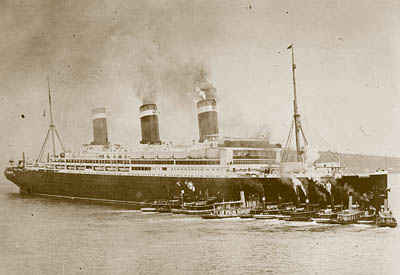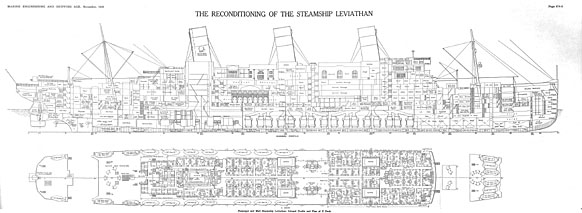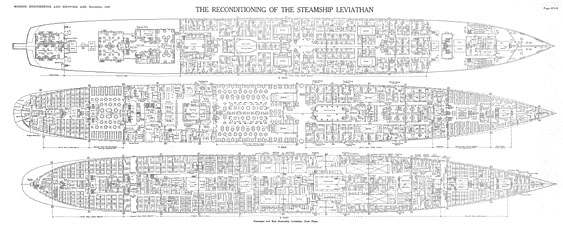
When she entered service in 1914, the German ocean liner Vaterland was the largest ship afloat. Interned in New York harbour at the outbreak of World War I, she was later seized by the United States government when that country entered the war and became the troopship USS Leviathan.
After the war the Leviathan returned to passenger service as the flagship of the newly-formed United States Lines, serving on the North Atlantic run from 1923 to 1934. Due to competition from other lines and the effects of Prohibition and the Great Depression, she was never a commercial success but is still remembered as one of the great liners of the 1920s and 30s.
A history of the ship can be found on Wikipedia: SS Leviathan
Added 9 May 2015
An extensive article on the refurbishing of the Leviathan was published in the November 1922 issue of Marine Engineering and Shipping Age and can be viewed online at the HathiTrust Digital Library. This includes photographs, data and plans:
The Reconditioning of the Steamship Leviathan.
The foldout plates printed with the original article are not included on the HathiTrust site, so I've presented them here. I've also included the B-deck plan, printed across two pages in the article, as a single image.
These plans were published in the United States before 1923 and as such are believed to be in the public domain.
Click to open larger images in a viewer.



Added 9 May 2015
An attractive colour illustration showing the ship's interior can be seen at the U.S. National Archives:
Inboard Profile of the SS Leviathan.
Added 9 May 2015
Photographs of the Leviathan from the Boston Public Library can be seen at Massachusetts Collections Online.